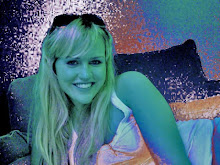
Jan Tschichold was born on April 2, 1902 to a script write named Franz Tschichold. He grew up with his father’s job influencing what he would become. Jan wanted to be a painter but his parents did not believe that would be a stable job so they steered him towards a profession as a drawing teacher. During his seminar in Grimma, he began to become interested in old typefaces and it was after three years he broke away from studying teaching and went to the Academy for Graphic Arts in Leipzig to be a typeface designer.
Tschichold was very important and influenced the change and use of font. While he was at school he became more and more irritated by the typography of the times. Tschichold was influenced by painters such as, László Moholy-Nagy and El Lissitzky, whose work interested him because they used contrasting forms to display balance and conflict. Tschichold thought that the cure for typography lay in discarding rules, accepting symmetrical setting, and the sole use of sans serif typefaces. One of the most important books of the time for fonts was his, Die neue Typographie (The New Typography) of 1928 and also Typographische Gestaltung (Typographic Design) of 1935. The outlook embraced by his, The New Typography, and its emphasis on sans serif typefaces and the vision that embraced 20th-century technologies, was very influential but led to his arrest by the Nazis in March 1933. His other major text was published in 1935, Typographische Gestaltung.
Tschichold designed the following typefaces; Classical Garamond, Sabon, Transit, Saskia and Zeus.
The Tschichold grid system was what Jan created for what he felt to be proper layout proportion. The Futurist would place text as graphic elements and it would make the page look chaotic. He authorized the grid as a guideline for designers to create clear, crisp compositions every time.






I love Jan Tschichold’s ideas. I thought The New Typography made so much sense but then I read that Tschichold himself changed his mind about it later on. Hence the centred text on the Penguin books that he designed — he’d never have used the classical approach if he’d kept his theories about the New Typography. Keep up the blogging :)
ReplyDelete